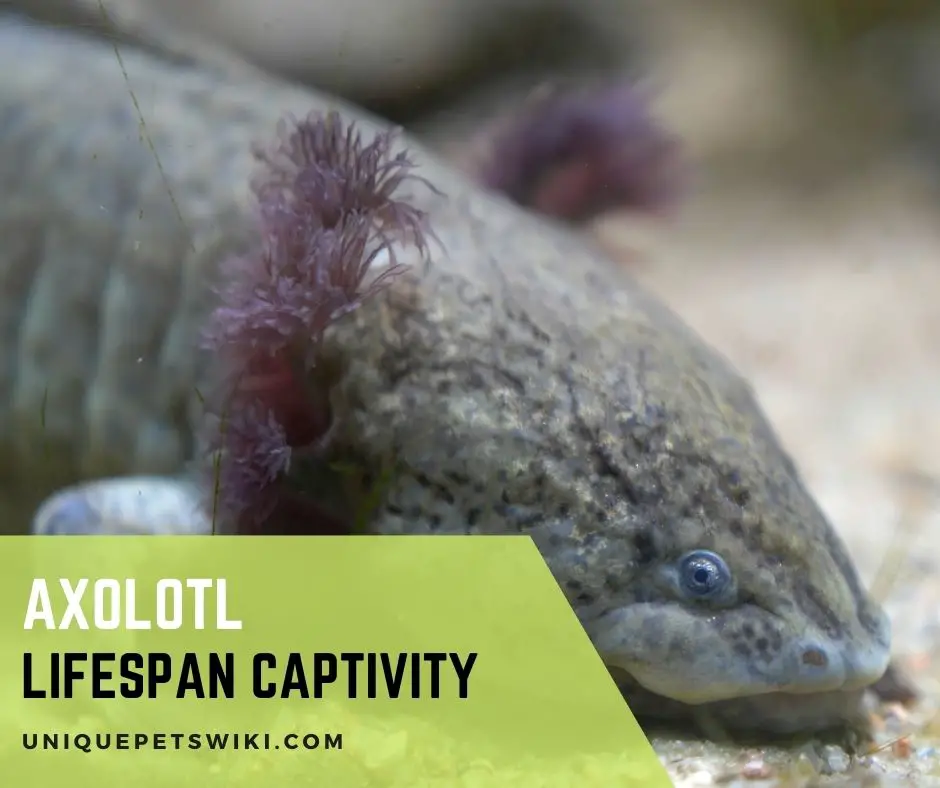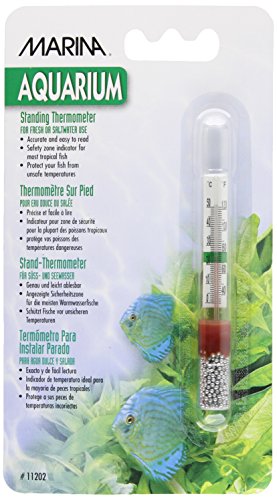When getting a new pet axolotl, one thing that likely plays at the back of your mind is its life expectancy.
The lifespan of your beloved axie is important for the simple reason that it determines the period of time you get to enjoy together.
With this in mind, you can prepare psychologically and emotionally for the journey of companionship in store for both of you.
This article explores the critical aspect of your axolotl’s expected lifespan in captivity, and how you can keep it safe and comfortable to live for the longest time possible.
You will know how best to care for your beloved salamander, especially as a first-time axolotl keeper.
Contents
How Long Do Axolotls Live In Captivity?
As a pet under captivity, an axolotl can live for as much as 12 years, provided that they are in a healthy and comfortable habitat.
This requires a tank that is large enough, has a complete aquarium kit for filtration, and is fitted with a cooler to guard against fluctuations in water temperatures.
The choice of food provided to the pet and the general care offered also impact its lifespan. The better the care that is given to the axie, the higher its chances of living to 12 years.
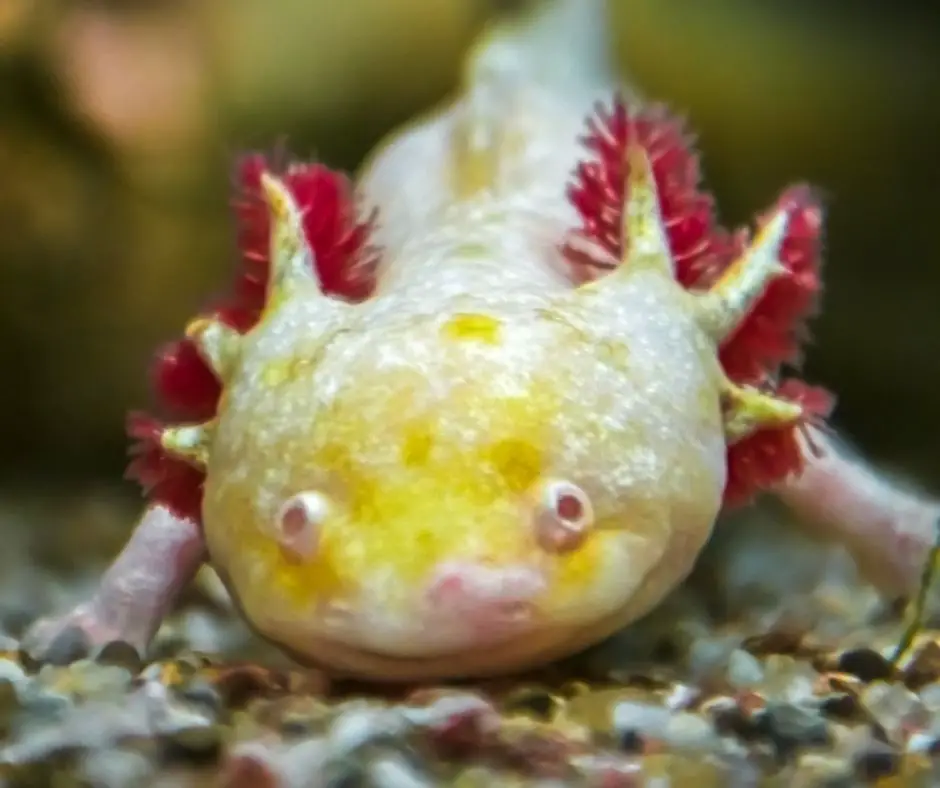
Axolotl Lifespan Captivity vs In the Wild
There are variations in the life expectancies of axolotls depending on their habitats. While in the wild, these salamanders will generally live for between 5 to 10 years.
On the other hand, in captivity, their lifespans increase. As kept pets, they will live for between 10 to 15 years, with 12 years being the average.
Shorter lifespans in the wild are mostly attributed to pollution of their habitats and the presence of predators.
Water pollution from human activity is not efficiently managed in large cities like Mexico City, with urbanization further fuelling the loss of their natural habitats.
Furthermore, invasive species like carp and tilapia consistently make their way into axolotl habitats and prey on them for food.
With the sluggish nature of axolotls and their lack of teeth or claws, they stand minimal chances of protecting themselves against stronger and faster predators.
Nevertheless, there are factors that shorten the lifespans of axolotls in captivity as well. Health problems and poor care are top on this list since these fragile pets are fully dependent on the keenness and competence of their keepers.
Simple accidents like jumping out of their tanks and then going for extended durations outside their natural habitats can lead to quick, avoidable deaths.
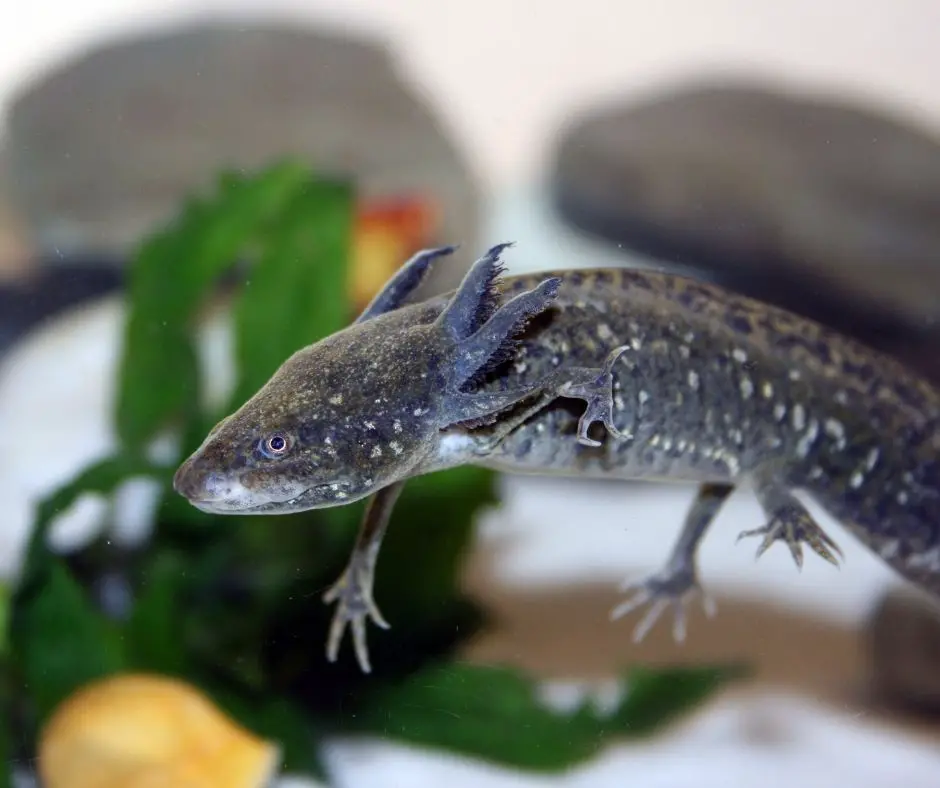
Are Axolotls Endangered?
In their natural habitats, axolotls are currently considered to be endangered species. Predators, habitats that are interfered with by human activity, pollution of their waters and natural calamities have all contributed to this.
Some estimates put the current number of axolotls, both in captivity and in nature, at close to 10,000. Nevertheless, there is no sure way to determine the accuracy of such figures.
However, the grim picture points to a need to encourage their reproduction both in the wild and when kept as pets.
6 Tips to Increase Axolotls Lifespan
Even though your axolotl will technically be in captivity as a pet, there are some ways to increase its lifespan.
Choosing a healthy pet from the start, setting up a proper tank of the right size, buying the best water filter for the axolotl tank, and generally ensuring proper care are some ways of increasing its lifespan.
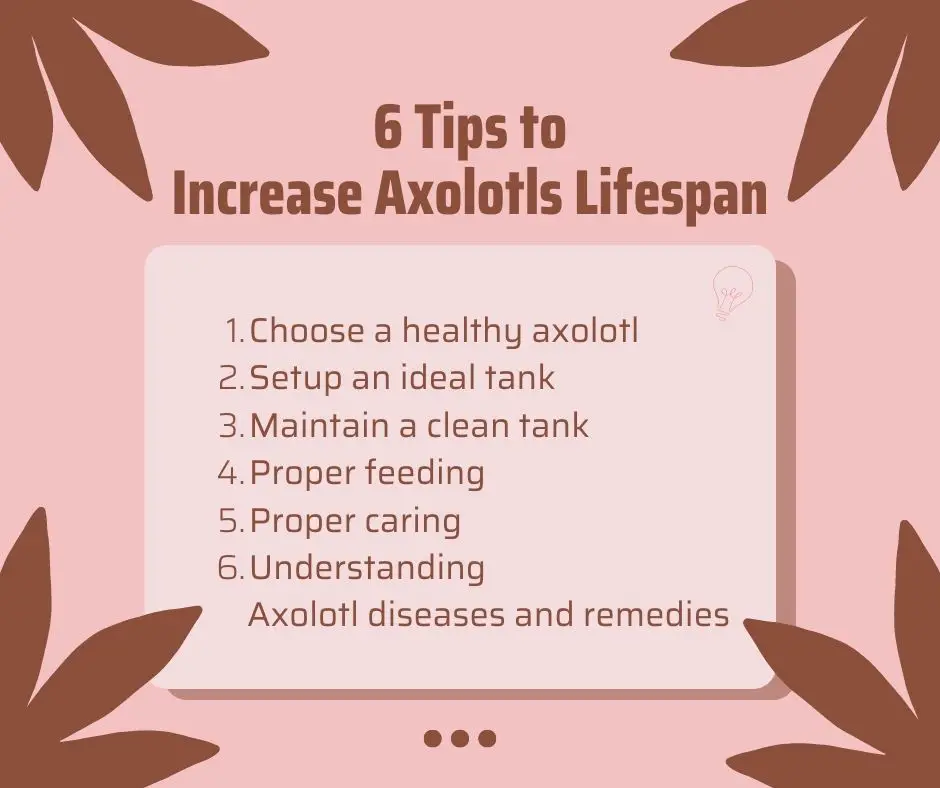
Choose a Healthy Axolotl
To choose the healthiest axolotl, watch out for its level of activity. A healthy pet swims around and rises to the top of the tank for a gulp of air occasionally.
Additionally, a healthy axolotl has a plump body, with smooth skin which is not flaky.
It is also important to avoid an axolotl with a curled tail, as this may indicate that it is ill or stressed, or both.
Another sign of poor health is an axolotl that seems to float to the surface of the tank more than it stays towards the bottom.
It may be a good idea not to carry an axolotl that shows such signs of distress home. Such issues may ultimately lead to a shorter life expectancy.
Setup an Ideal Tank
A proper axolotl tank will certainly require a filter, plants and the other regular stuff. However, one key factor to bear in mind is that axolotls require very specific substrates in their tanks.
Sand, ceramic tiles, or big rocks are all good choices, and so is a bare-bottomed tank.
Substrate material may dissolve into the water and upset the pH balance, hence it is crucial to bear this in mind when making your selection.
Similarly, when picking plants for axolotl tanks, it is important to remember that live ones are likely to add more oxygen into the tank during respiration.
The size of the tank further impacts their general comfort and consequently, their longevity. A very small tank is likely to stress out your pets and lead to lower lifespans.
This is because stress causes diseases in the long term if there is no timely intervention.
The space at the bottom of the tank is a little more important than its depth. This is because these pets tend to frolic near the base of the aquarium.
Hence, the axolotl tank setup should provide for a perimeter that is wide. At a minimum, you should aim for a tank that holds about 20 gallons of water.
Finally the issue of tank-mates is also a key consideration in the axolotl setup. Axolotls generally have no problem living alone.
However, if you feel the need to get them a friend or two, bear in mind the fact that these salamanders are actually carnivorous, and can be predators too.
White cloud minnows, apple snails, small shrimps and zebra danios are some of the best tankmates for axolotls. Avoid adding any large, aggressive fishes to the tank as they may prey on the axolotls.
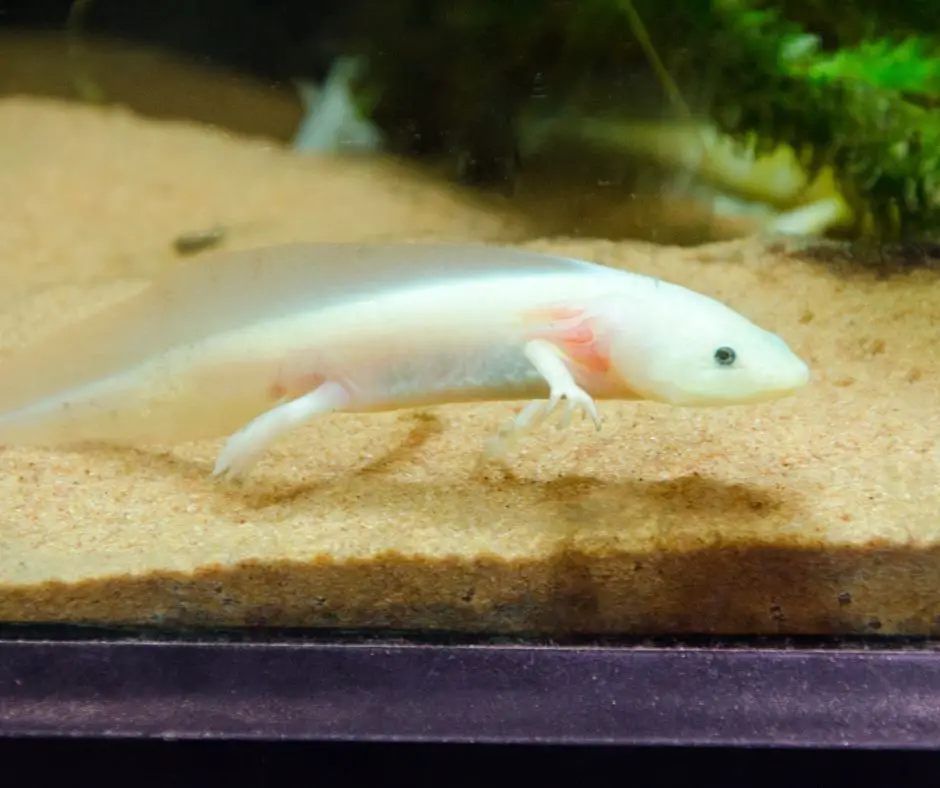
Maintain a Clean Tank
Ensuring that the axolotl lives in the healthiest environment possible plays a key role in your pet’s longevity.
Maintaining water temperatures at between 60 and 64 degrees Fahrenheit, and pH levels at around 7.2 creates a conducive atmosphere for the pet salamanders.
In addition, you need to consistently monitor the hardness of the water, and preferably maintain it at moderate readings of between 7 and 14 dG.
It goes without saying that dirty water is absolutely harmful to axolotls, and therefore, the tank should be cleaned weekly.
Tank cleaning also involves changing the water to reduce its level of murkiness. To avoid shocking the axolotl, drastic water changes are discouraged.
It is advisable to change just about 30% of the water at one time, and then refill with an equal amount of dechlorinated water.
Marina Standing Thermometer
- Fish tank thermometer designed to sink to the bottom
- Remains standing in a vertical position
- Accurate and easy-to-read thermometer
- Provides readings in Fahrenheit and Celsius
- Includes safety zone indicator appropriate for most tropical fish
Last update on 2022-12-29 / Affiliate links / Images from Amazon Product Advertising API
Proper Feeding
A proper diet is also important in ensuring a longer lifespan for your pet. Insects, insect larvae, daphnia, and worms are some of the delicacies most favored by axolotls.
Nevertheless, sufficient care has to be taken to feed them the right amounts of food depending on their age and current life stage.
For instance, adult axolotls can be fed every two to three days. Sufficient time has to be allowed for digestion to occur, or they may end up bloated and uncomfortable when overfed.
It is important to observe them frequently after feeding to determine when they should be offered their next meal.
For hatchlings and baby axolotls, daily feeding may be required to enable proper formation of their bodies.
Once or twice feeding in a day is often enough because excess food may lead to wastages which could also upset the water’s pH balance.
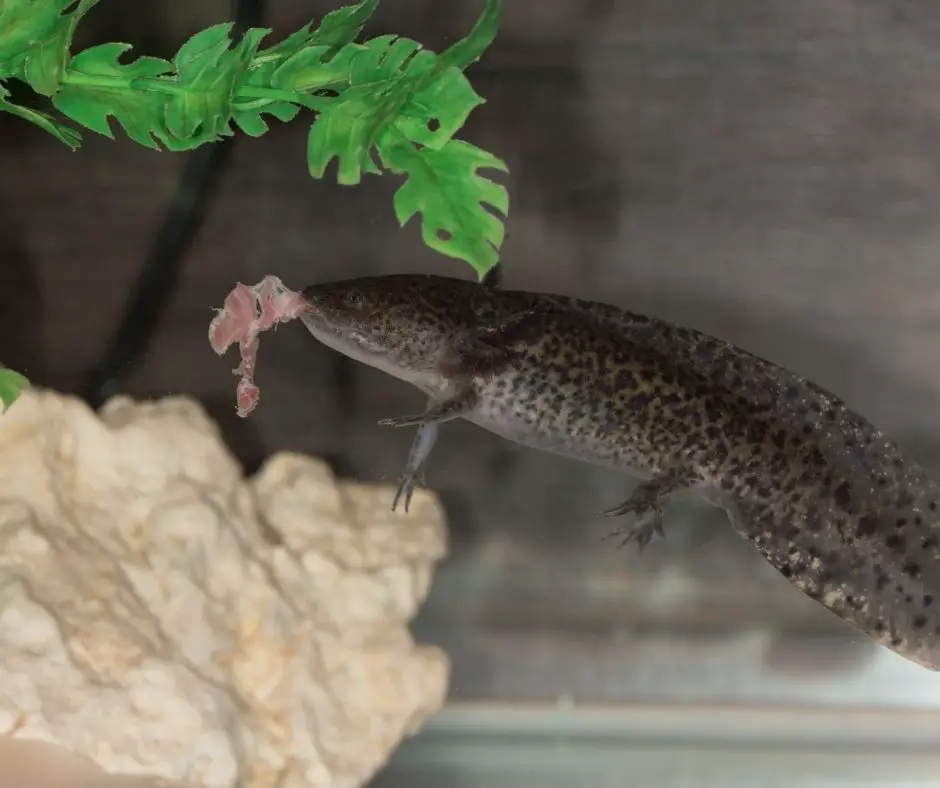
Proper Caring
Axolotls also require a lot of ‘alone time’ given their shyness and fear of being held. Unlike other pets, axolotls don’t like petting and will easily be stressed when constantly removed from the water.
It is therefore important to suppress the urge to pet, get them out of the water, or play with them as these actions also impact their life expectancy.
Understanding Axolotl Diseases and Remedies
While an axolotl may fall ill sometimes, its chances of bouncing back and continuing to live a healthy life are dependent on timely interventions.
Hence, it is crucial to learn your pet’s usual behavior so that when its daily patterns change, you can immediately tell that something is amiss.
This also entails observing your axolotl’s body keenly to notice any changes immediately. Knowing the potential diseases the pet salamander may catch is also important, as it gives you the chance to seek proper and timely treatment.
Conclusion
Axolotls in captivity tend to outlive those in the wild because the usual dangers they face in nature are controlled better in an aquarium.
Nevertheless, even as kept pets, a number of factors may impact the life expectancy of your beloved pet salamander.
Choosing a healthy pet from the start, and ensuring that it is given ideal care in a safe environment are all important in giving it a long life.
A right-sized tank, sufficient nutrition, proper care and observation, and hides in the aquarium will go a long way in pushing an axolotl’s lifespan closer to 15 years.
